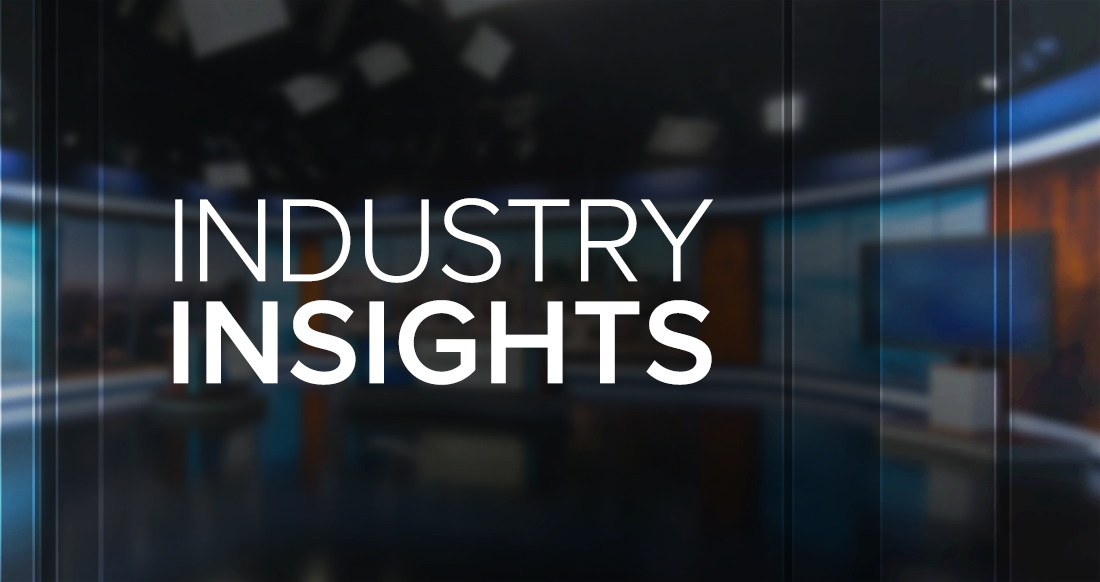Industry Insights: Advice for the set design process

Subscribe to NCS for the latest news, project case studies and product announcements in broadcast technology, creative design and engineering delivered to your inbox.
For this month’s Focus on Set Design Trends, we convened a virtual roundtable of scenic designers to talk about various aspects of the design process, ranging from the latest technology to the best advice they can give a prospective station.
What is the biggest consideration during the set design process?
“We always strive to orchestrate the many facets of the design process; meeting expectations, design relevance, budget, and technology, while also giving the news team the correct tools they will use for storytelling. The importance of each factor may vary region to region or station to station,” said Tim Saunders of Broadcast Design International. “It’s really important to ask the right questions and to listen to the client.”
“Today the number one question revolves around the use of technology in the set,” said Mack McLaughlin from FX Design Group.
“The networks and cable shows all have touchscreens, big video walls, virtual reality and augmented reality. They also have large budgets and the staff to manage and feed these systems,” adds McLaughlin. “No doubt they look great but you should ask your designer and your team the following questions: How will you use the specific technology to enhance your storytelling? Is the ROI there? Technology can be a very hungry baby. What can your staff feed it both in terms of design and technical proficiency? Will you feed it for every story, just breaking news, or will it become a static background? What’s the right technology for your market and demographics?”
“Team DDG believes game-changing set design does not follow a formulaic scheme,” said Diane ‘DiFi’ Fiolek from Devlin Design Group. “The design has to accomplish what each unique client wants and needs right now to inspire and engage their audience, and also must address how their newscast will evolve in the future.”
“Collaboration is the key ingredient to a successful set design,” said Jeff Hall of JHD Group. “It is essential to consider the many voices that go into making a studio successful and making sure everyone has the opportunity for collaboration. We always work with the client to find the common goal from the outset… Leave the ego behind.”
“In our design process, we stress staying responsible to the desired budget and trying to give the most visual bang for the buck within that number,” said Brendan Kilroy of Erector Sets. “With this in mind, we end up using our creative juices not just for the design, but in the engineering and execution of the visual as well.”
“Another challenge impacting design is the use of fixed PTZ cameras. As many stations switch to automated systems with fixed PTZ heads, we now must also design a layout that will work within the range of motion of the camera. Shot blocking, geometry, and show flow become more critical earlier in the process. This will also limit the number of relationship / toss shots you can achieve,” added McLaughlin.
“‘What makes us different?’ (Both scenically and editorially) This is the first question to address strategically at the beginning of the creative design process with each client,” said Peter Provost of Provost Studio. “The biggest considerations by far are 1) establishing how the new set design will create a distinct visual difference among its competitors in its local market and 2) expressing the vibrancy of the local region local region of the brand.”
Subscribe to NCS for the latest news, project case studies and product announcements in broadcast technology, creative design and engineering delivered to your inbox.




tags
Brendan Kilroy, Broadcast Design International, Broadcast Studio Technology, design process, Devlin Design Group, diane fiolek, erector sets, erector sets inc, FX Design Group, jeff hall, JHD Group, mack mclaughlin, peter provost, provost studio, set design process, Tim Saunders
categories
Exclusives, Featured, Heroes, Industry Insights, News Set Design, Set Design, Studio Technology, TV News Set Design